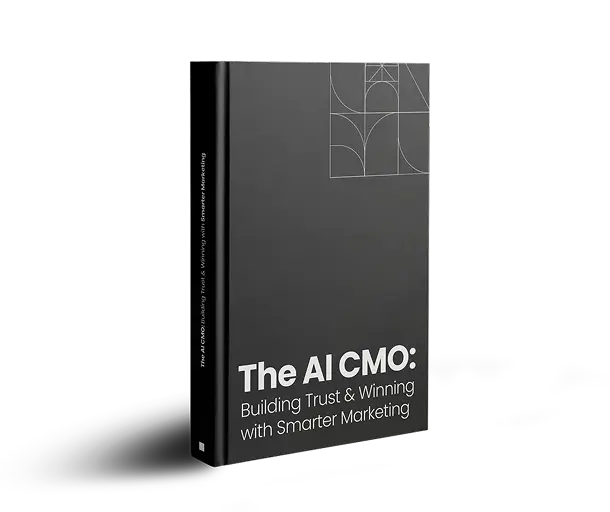
Introduction
Presently, the strategies used by businesses to find target audiences are very different from the once used just a few decades ago. The transition from the old school methods to effective strategies for the digital world has been painful.
Today, in the digital age, one of the most successful strategies is Content Marketing. It is most effective when you want to find leads and retain customers who have already purchased something.
Besides, Content marketing not just helps you to attract customers interested in your brand proposals, but also to convey your business identity and values.
And, most importantly, it enables you to secure a place in your customer’s daily lives through the use of social networks.
The latest reports say:
. 70% of the B2B content marketers say their brand’s content marketing efforts this year have been somewhat/much more successful than last year.
. Interestingly, 96% of the most successful content marketers say that content marketing has helped them build credibility and trust with their audience.
. A whopping 95% of the B2B service and product buyers admit that they view content as a trustworthy marker when evaluating a business.
. 71% in the B2B industry also admitted to reviewing an organization’s blog during their buyer’s journey.
. Content marketing costs 62% less than traditional marketing programs. On top of this, it generates 3x the leads.
In this article, we’ve got together 28 Top Marketing Experts from across the globe who share their views and insights on “Content Marketing Tips for B2B Businesses”.
Here’s Our Expert Panel
- Jim Fuhs
- David Leonhardt
- Theresa Cramer
- Pamela Wilson
- John Rampton
- Bob Bentz
- Carl-Wilhelm Vedvik
- Liam Carnahan
- Jerry Low
- Pam Didner
- Isaac Bullen
- Evan LePage
- Ben Sailer
- Beth Wanner
- Meryl Evans
- Clement Lim
- Andre Oentoro
- Laura Rubinstein
- Zack Gallinger
- Carlo Borja
- Raelyn Tan
- Joshua Mackens
- Brian Carter
- Nick Hollinger
- Larry Kim
- Gerry White
- Christoph Trappe
- Mandy McEwen
#1 Jim Fuhs

Businesses are creating more video content than ever, to include podcasts and livestreams. What needs to be done is the re-purposing of this content to drive traffic back to the original post. Too many times a podcast or Livestream is created and it is off to the production of the next one. Tools like Descript, Lately, Headliner, and Camtasia allow you to repurpose your content into short-form highlights to drive interest in your full-form content.
Author Bio
Jim Fuhs is President of Fuhsion Marketing. Jim is a retired Marine LtCol turned digital marketing consultant, speaker, live streamer, podcaster, remote live stream, and virtual event producer with over 30 years of business and social media experience. You can connect with him on LinkedIn.
#2 David Leonhardt

TB2B is different than B2C content marketing. In one’s business role, your target market is interested in useful information. As private individuals, they might laugh at memes and funny animal videos, but in their business role, they need useful information.
But that useful information does not have to be boring or dull. If you can spice it up with something they find interesting, such as memes or entertaining videos, or infographics drawn with cartoon characters, you can actually hold their attention longer. Just make sure the entertainment value enhances the useful message, rather than detracts from it.
Author Bio
David Leonhardt runs THGM Writers, a team of freelance ghostwriters who write books and screenplays, speeches and blog posts, articles, and game scripts. They put your ideas in words. You can connect with him on LinkedIn.
#3 Theresa Cramer

Content marketing in the B2B realm can be challenging. B2C brands have an advantage because they often have exciting stories to tell. In fact, this is why I think outdoor companies like REI or Patagonia are so good at creating content. But for B2B brands finding stories to tell can be more difficult. As a result, they often rely on stodgy old case studies or white papers and require their audience to submit information to gain access to the content because they are still focused on getting leads. There’s nothing wrong with this, it just has to be at the right point in the funnel. You can’t go straight to the registration page. First, you have to establish a reputation as a thought leader whose content is worth registering for. Content marketing is about providing value, the sales are secondary.
Hire a professional — Your marketing department may be filled with aspiring writers, but creating great content marketing requires you to have someone who understands what it means to create content that audiences want to consume. They need content first, sales second mentality, and not every marketer can shift out of that mindset. If you don’t have someone who can put the content first on your staff then it’s time to look outside of your organization.
Have a documented plan — All the research shows that the companies who are most successful at content marketing have a documented plan. If you’re just creating white papers and praying for people to find them, you don’t really have a plan. Not only do you need to know what the goal is and how each piece of content is serving that goal, but you need to have a distribution plan.
Plan for distribution — Too few companies put thought into how they will make sure their content finds an audience. And if you want to branch out beyond the few people coming to your company blog, you will likely have to put some budget behind your distribution. Think beyond social media, and reach out to companies in your space — perhaps professional development associations — to find out if they are interested in partnering with you to get your thought leadership content out to their audience. Sponsor a popular industry newsletter or participate in a related webinar. Publishing content isn’t enough. SEO and social media can’t do it all. You need a distribution plan!
Combine content marketing with other tactics — This is related to distribution, but if you’re a B2B company creating content that is freely available on the web — whether it’s a blog post or a video — it behooves you to also have a retargeting plan in place. Without a registration page to gather your leads, it only makes sense to retarget the users who come to your blog with ads for products, or even just more content that moves them further down the funnel.
Author Bio
By day, I am a freelance writer with a long history of working in digital media and marketing. Most recently, I edited EContent and Speech Technology magazines before striking out on my own to bring my content marketing expertise to companies big and small. By night, I am a reader and writer of books, an NPR addict, and an avid gardener. Although my background is in technology, I thrive on new challenges and love working with small businesses to tell their stories. You can connect with her on LinkedIn.
#4 Pamela Wilson

Content marketing? It’s not a marathon or a sprint.
Content marketing is a habit — a “lazy” habit.
The smartest way to create content is to break content creation tasks into leisurely blocks of time spread over several days.
Break your tasks into four smaller parts and assign each to a day of the week. Tackle each content creation task in short chunks of time. Then take a break.
When you spread the work over four days, you can give it your full energy, your well-rested brain, and your fresh eyes.
Here’s how it works:
Day 1: Build your content structure — choose a topic, write the headline and subheads
Day 2: Create your first draft — make it messy and get it done!
Day 3: Polish and prepare to publish — proofread, format, polish, add images
Day 4: Publish and promote — share your content with your email list and social connections
Need to research your content topic? Add a Day 0, but set a time limit for your research. Efficiency is key.
With this approach, you’ll still work at content creation, but you’ll work smart.
Best of all, you can start right away. Pick a publication day and work backward to create your schedule, plugging each task into your calendar where it works best.
Practice this system and you’ll create fresh, thoughtful, and consistent content that your audience will love.
Author Bio
Pamela Wilson is an online educator, author, keynote speaker, and founder of BIG Brand System. She helps people in mid-career and beyond to build online businesses they love. You can connect with her on LinkedIn.
#5 John Rampton

Start blogging today. Start writing for anyone that will take you. Overtime work your way up to bigger and bigger publications. I started writing for my own blog and a few smaller blogs. Then worked my way into the Huffington Post, then Inc, then Forbes, and kept up the blogs that helped further my businesses. Just keep pushing higher and higher.
Author Bio
John Rampton is an entrepreneur, investor, and startup enthusiast. He is the founder of the calendar productivity tool Calendar.com. You can connect with him on Twitter and LinkedIn.
#6 Bob Bentz

When it comes to B2B content marketing, I have always believed that if you position yourself as the expert, the business will come your way. You don’t have to sell as strongly as you do with B2C marketing. Think about what happens at a trade show speech. If its good, the speaker has a host of delegates waiting to talk to him or her at the end of the presentation.
I’ve seen that payout since writing my book “Relevance Raises Response” about mobile marketing. It has provided me with instant credibility even from people who have never read the book and have no intention of reading it. It has led to numerous speaking opportunities and those speaking opportunities have led to business.
Author Bio
Bob Bentz is the author of “Relevance Raises Response: How to Engage and Acquire with Mobile Marketing.” He is also a professor at West Virginia University where he teaches the graduate-level course in mobile marketing. Bentz is the president of the mobile-first digital agency, Purplegator. You can connect with him on Twitter and LinkedIn.
#7 Carl-Wilhelm Vedvik

My biggest advice for busy B2B businesses is to start doing a detailed keyword analysis & content research. Then plan your content calendar as if it was a book because when you follow this content calendar one day you’ll actually have enough content for a comprehensive, well-researched book. That is how you build thought leadership.
Author Bio
CEO at Adline Professional – a super easy advertising platform powered by AI. You can connect with him on LinkedIn.
#8 Liam Carnahan

A content strategy should start at the end—in other words, define your long-term goals first, and work backward from there. Figure out what steps you’ll need to take to achieve those goals, and identify the roadblocks standing in the way. Once you know all that, it’s a lot easier to find a path forward, leading to long-term success.
Author Bio
Liam is a content strategist and SEO specialist, helping businesses bring in the right traffic to their website, and converting that traffic into paying customers and clients. You can learn more about him at InkwellContent.com. You can connect with him on LinkedIn.
#9 Jerry Low

Adapt to Semantic Search
Traditional market and SEO keyword research are no longer sufficient for today’s search. Google Patent information has provided us some insight that search results may also be based on categorical quality. This means that in addition to keywords, it is essential that accompanying content be equally relevant and insightful.
One good example of this will be a website that sells Cloud storage. Aside from the product, content needs to be skewed towards the category as a whole. That means coverage of issues such as cybersecurity, data integrity, and other relevant areas.
Author Bio
Jerry Low is a geek dad who specializes in SEO and content marketing,. He is the founder of WebRevenue.io, a digital marketing agency that partners with SaaS and tech companies. You can connect with him on LinkedIn.
#10 Pam Didner

Know your customers’ challenges and pain points well. Talk about your products and services in the context of solving their issues. Make it about them, not you.
Author Bio
Pam Didner is a B2B marketing consultant, writer, speaker, and author of 3 books: Global Content Marketing, Effective Sales Enablement, and the Modern AI Marketer. Her forte is to create successful global marketing plans and communications to bring sales and marketing together. You can connect with her on LinkedIn.
#11 Isaac Bullen

Invest time in making a decent strategy, so many businesses just start creating without actually spending time working out a strategy beforehand. I’d also suggest signing off a budget for amplification, whether you use that for influencers or social media ads. It’s getting harder and harder to be seen on social organically.
Author Bio
Isaac Bullen is a Director of Wellington-based digital marketing company 3WhiteHats. You can connect with him on LinkedIn and Twitter.
#12 Evan LePage

Find like-minded companies with a similar target audience but who aren’t competitors. Build a content partnership with them. Participate in each other’s webinars. Provide each other with guest posts. Support each other’s launches on social media, ProductHunt, and within communities. Not only does this help fill your content calendar, it regularly exposes you to a pool of your target audience that you may not have tapped. All companies benefit from these tips of content partnership.
Author Bio
Evan is the Senior Content Manager at Unito, a platform enabling two-way integrations between SaaS tools. You can connect with him on Twitter.
#13 Ben Sailer

The biggest tip I have for B2B marketing is to remember you’re still marketing to people. It’s easy to get caught up in landing big logos and accounts, but ultimately, you’re selling to human beings at those companies. The fact that I get multiple emails a day from people spamming as many email addresses from CoSchedule employees as they can find is, at least in small part, evidence that not all marketers think this way. But if you can, it can be a powerful guiding principle that can help direct everything you do.
Author Bio
Ben Sailer is the Inbound Marketing Director at CoSchedule. His areas of expertise include SEO, content strategy, and copywriting. When not at work, he enjoys freelance writing, playing guitar, and getting outdoors with his wife and dog. You can connect with him on LinkedIn.
#14 Beth Wanner

Don’t get stuck on the hamster wheel of continuously producing new content. Just like up-cycled fashion is having a moment, so is recycled content. How much faster could your team move if they focused on the surfacing, dusting off, and refreshing content vs. always adding new pieces?
Author Bio
As the Senior Director of Product Marketing & Brand Strategy at Uberflip, the industry’s leading Content Experience Platform (CEP), Beth leads a talented team of content, product marketing, and brand strategists who help other marketers discover how to increase content consumption to accelerate the buyer journey. You can connect with her on LinkedIn.
#15 Meryl Evans

Ensure your content is accessible as it’s more inclusive and gives people choices for how they consume your content. When it’s not accessible, people will go to another business that values accessibility.
Author Bio
Meryl Evans is an author and contributor to books on tech and business, a sought-after speaker, and a digital marketer who works with accessibility and B2B companies. You can connect with her on Twitter and LinkedIn.
#16 Clement Lim

Be unique and interesting. No matter how much content you create, you’ll never stand out if you’re just saying the same thing as your competitors. To succeed, your content needs to convey a distinctive and recognizable voice while addressing the concerns of your audience. By doing this consistently you will establish your credibility, build trust and generate leads.
Author Bio
Clement Lim is a B2B copywriter specializing in SaaS. He creates lead-generating content for companies that provide products and services to Fortune 500 companies. Clement’s work has been featured in Entrepreneur, Search Engine Journal and Kissmetrics. You can contact him on LinkedIn.
#17 Andre Oentoro

Having such a solid social media presence in today’s digital age is crucial for any B2B business to stand out from the crowd and expand its reach. Therefore, social media posts are a must-have when it comes to B2B content marketing strategy.
Social media posts (i.g., short videos, polls and surveys, infographics, interactive questions) that offer value with a slice of entertainment will actively engage more audiences, making them familiar with your brand. Actively creating those casual and interactive social media posts makes it much easier for other companies to interact with your businesses. In other words, it makes your business more human and approachable.
LinkedIn remains the most popular social media platform to share your B2B social media content. You might as well consider leveraging Facebook, Twitter, or even YouTube to createmore diverse types of social media posts so that you can appeal to more companies and keep your B2B sales funnel full.
Author Bio
Andre Oentoro is the founder of Breadnbeyond, an award-winning explainer video company. He helps businesses increase conversion rates, close more sales, and get positive ROI from explainer videos (in that order).You can connect with him on LinkedIn or Twitter.
#18 Laura Rubinstein

Is your content creating a buzz? Your content online will position you as a leading authority if you do it well. In order to attract the attention and interest of your ideal buyer, you must be savvy about him/her/them. Create a deep persona profile that outlines the story of the struggles, stressors, and challenges they face as well as their deepest desires. Go out and snoop on your buyers online. What brands or businesses (like yours) do they love and what do they love about their message and content? What topics are they engaging most about and what are they asking for? Once you know what they crave, you want the focus of your content to let them know you “get” them (like no other brand does) and then indicate that you have the answers, solutions, and value they are seeking.
Your goal is to create buzz-worthy content. If you wouldn’t share it or be proud to tell every one of your colleagues and even your friends who understand your industry about it, then go back to the drawing board. Keep snooping, surveying, and testing. Try innovative content strategies like interactive video, AI chatbots, SMS, quizzes, calculators, and podcasts. Once you’ve hit the sweet spot of knowing what content your market devours, create your content calendar. But you can’t just post and hope people see it. You either need to promote with ads online and/or get an influencer tribe like Social Buzz Club to give you the raves and create the buzz.
Develop the content such that has multiple uses. First, you might be creating an in-depth cornerstone piece, white paper or ebook. Then you might create infographics, Slideshare presentations, videos, audios, and memes (quote images). Finally, to strategically position your content, develop different content for each stage in the buyer’s journey. At Transform Today we leave no prospect behind. Whether they are just becoming aware of their need or deep into the decision-making process, you’ll want content that educates and content that helps them choose your brand.
Author Bio
Coach Laura Rubinstein is an award-winning Social Media and Marketing Strategist, Certified Hypnotherapist, Master Leadership Coach, speaker and bestselling author of the book “Social Media Myths BUSTED: The Small Business Guide To Online Revenue.” She is the founder of Social Buzz Club, the influencer marketing platform that uses gamified content sharing to help your content go viral. Laura has developed marketing and branding strategies for more than 1,000 businesses, celebrities, coaches, financial advisors, speakers, and authors across the globe helping them create more profits and brand popularity. Her profit-generating strategies and popular blog at https://TransformToday.com make her a highly sought-after speaker and consultant. You can connect with her on LinkedIn or Twitter.
#19 Zack Gallinger

When creating content for B2B, I like to think about whether it will attract links and improve my search rankings in the long-term. I’ve found the best type of content for this purpose is content that is filled with statistics. People love to cite statistics when they are writing their own content so naturally, they will link back to your post if you can provide them with the right data. To get that data, you can either a) aggregate data sources from around the web or b) perform your own original research, typically with a survey. Your exact approach will likely depend on your budget.
Author Bio
Zack Gallinger is the president of Talent Hero, a digital marketing agency that specializes in finding new clients and candidates for recruiting agencies. You can connect with him on LinkedIn .
#20 Carlo Borja

Build relationships. This is the foundation of any kind of content marketing strategy. Then, you create and exchange value in the form of content. Everybody wins.
Author Bio
Carlo Borja is the online marketing manager of TimeDoctor.com. He is a remote worker, a digital marketer, a serial coffee drinker, and more. You can connect with him on LinkedIn or Twitter.
#21 Raelyn Tan

If there is one tip I can give, it would be to stay consistent. It is easy for anyone to create one piece of quality content, but to do it week in and week out for years on end is a whole different ball game. Quality + Consistency = Content marketing done right.
Author Bio
Raelyn Tan is a digital marketing strategist specializing in list building and profitable digital product funnels. After blogging for 10 years, a first-class honors degree in marketing, and over 40K subscribers, she loves providing cutting-edge online marketing strategies so that you can cut through the confusion and get straight to the strategies that will actually help you to grow your online business. She currently has a following of over 50k+ online entrepreneurs and is serving over 10K students. You can connect with her on LinkedIn or Twitter.
#22 Joshua Mackens

When you’re creating your content calendar, consider SEO & the impact it could have. Make sure you implement keyword volume as a part of your priority of which topics to tackle first. Content marketing is great for many reasons, SEO just being one, but you can drive big-time traffic and thus big-time sales with even just a few well done, SEO optimized blog posts. Your biggest friend will be Google’s Keyword Planner which can give you keyword volumes. Most people don’t know this but their volume isn’t terribly accurate in terms of preciseness. For example, if the Keyword Planner (KP) says there are 5,000 searches a month for a particular keyword, it’s probably not too accurate with that. In my experience, the volume is much, much higher. However, KP is helpful comparatively. In my experience is Keyword A gets 5,000 searches a month and Keyword B gets 10,000, typically you can expect double the traffic from a well-ranking blog post from Keyword B vs Keyword A. That typically is accurate in my experience. So, while the precise number may not be accurate, the comparison among keywords should be and should help you understand which keywords are most valuable to you.
I’m not suggesting for you to plan your entire content marketing strategy around SEO. But I would highly encourage you to make it a part of your process. As I said, you could see a solid amount of
leads and sales come in from just a few well-optimized blog posts. And then after you see that, SEO might end up becoming a huge priority. Which I would certainly encourage.
Author Bio
I am the owner of Tutelary Marketing, a faith-based Local SEO company located in Nashville, TN. We help local businesses rank on the 1st page of Google & turn SEO “strategies” into real money coming in the door & we prove it. You can connect with her on LinkedIn.
#23 Brian Carter

We’ve found that the most efficient way to get results with B2B content is to start with a YouTube video. Create a YouTube channel, brand it, and create branded videos 5-10 minutes long on blog-like topics (combine copywriting with SEO keywords), and answering the questions your prospects are asking (check Quora).
Use Zoom to records discussions or interviews, or do a solo presentation or chat to the viewer using Screenflow or Camtasia.
For each YouTube video, after it’s uploaded, you can get the transcript, then correct any errors, format it, and you have a blog post.
Take the audio off the video and you have a podcast (try something like BuzzSprout to easily publish it everywhere).
Then email your lists or cold targets about your new video and blog post.
Post it on LinkedIn (as a LinkedIn post uploading your video and linking to your blog post, or put “Write an article”).
If you want to spend ad money, you can always drive traffic to the post with Facebook ads (b2b targeted), or run YouTube ads.
You can go as far as you want with this, but the video and blog post is the core of the strategy.
Author Bio
Brian Carter is a marketer, entrepreneur, keynote speaker, and author selected by IBM as a Futurist and recognized as “an expert you should listen to” by LinkedIn. He has appeared in media including Bloomberg TV, ABC, Forbes, The Wall Street Journal, Entrepreneur, AdWeek, and The New York Times. In his 20 years of business, Brian has worked with organizations of all sizes, including Microsoft, McDonald’s, NBC, Salesforce, JP Morgan, Humana, and The U.S. Army. You can connect with him on LinkedIn.
#24 Nick Hollinger

Focus on specific categories at one time and then write 10-20 topics in that category before moving onto another. This allows you to become a focused content creator in that category in the eyes of readers and search engines. An example of a category would be “Trade Shows” and then topics within that category would be “Best Games to Play at a Trade Show”, Best Booth Design for your Next Trade Show” and so on.
Author Bio
I am the CEO and Co-founder of Visitor Queue. Currently working with ~5000 companies across the globe including Microsoft and Jones Lang Lasalle. In my spare time, I am also the Game Day Director for one of Canada’s most successful Junior Hockey Teams (the London Knights). Previously, I held Head of Marketing/Sales roles at SMB B2B organizations. A strong believer that hard work beats talent when talent doesn’t work hard. I enjoy sharing my knowledge, experience, and opinion on Marketing, Sales, SaaS, and Entrepreneurship. You can connect with him on LinkedIn.
#25 Larry Kim

Use social media automations to push your content. For example, on Facebook and Instagram, you can set up social media chatbots (https://mobilemonkey.com) to send out mass messages to your customers. It’ll turn your Instagram and Facebook traffic into website traffic.
Author Bio
Larry Kim is the CEO of MobileMonkey, the World’s Best Facebook Messenger and Instagram Marketing Platform and free chatbot builder. You can connect with him on LinkedIn.
#26 Gerry White

Content Marketing in B2B is fundamentally the same as B2C, the key difference is that you need to be better, you need to write content that an expert audience will want that will drive engagement and authority. If your target audience discovers your content on a topic is more shallow, or less trustworthy than content written by competitors, this is the point at which you will lose. This loss is across social, SEO, and future trust.
Think about it this way – if there are five guides on the subject, make sure yours is the one that people reference and share.
Author Bio
Gerry White has been in the industry for 20 years, with a background in development he transitioned to technical marketing leading on SEO, analytics, and other digital growth strategies in companies, agencies, the government, and corporations such as the BBC. International conference speaker and currently SEO Director at Rise at Seven. You can connect with him on LinkedIn.
#27 Christoph Trappe

The biggest tip I can offer is to be consistent, relevant, and unique. I know that’s vague, so let’s unpack it.
We all know that B2B is super competitive so every little bit can help. One way to do that is by sharing your company story, differentiator, and more all the time and everywhere where your target audience is.
I’m currently a big fan of tying a podcast into a livestream and then using that content in all kinds of campaigns and ways. Create good content. Then throw is a parade.
Author Bio
Creating experiences useful to people interested in understanding their customers | Top 100 CX thought leader | Top 5% Global Podcaster | Livestreamer | “Going Live: Livestream your podcast to reach more people” author | You can connect with him on LinkedIn.
#28 Mandy McEwen

Humanized content is the name of the content game for B2B in 2021 and beyond. Your audience wants, and expects, more than white papers, webinars, and boring blogs. You have got to leverage your PEOPLE to create humanized, engaging content. Think about how you can incorporate more videos, interviews, research studies, collaborations, stats, industry trends. Get your employees involved, get your industry thought leaders involved. Think outside the box. B2B content marketing is evolving rapidly and your prospects expect more. Give it to them.
Author Bio
Mandy McEwen is the Founder & CEO of Mod Girl Marketing, an award-winning digital marketing agency based in California. She is a renowned content creator, speaker, and mentor with 8+ marketing courses and an Inc-rated Facebook group. Mandy and her team at Mod Girl® partner with B2B companies to increase brand exposure and revenue through the power of LinkedIn and humanized content marketing. She has been named as Top 24 B2B Marketer by LinkedIn, listed in Search Engine Journal as a Top 12 SEO Expert, and Top 20 Female Marketer by G2. You can connect with her on LinkedIn.
Our blog
Latest blog posts
Tool and strategies modern teams need to help their companies grow.

Our definition of marketing success in B2B is evolving. For years, traditional metric...

Video has emerged as one of the most effective tools to cut through the noise and con...

The way B2B buyers research, engage, and decide has changed and so must the way marke...







